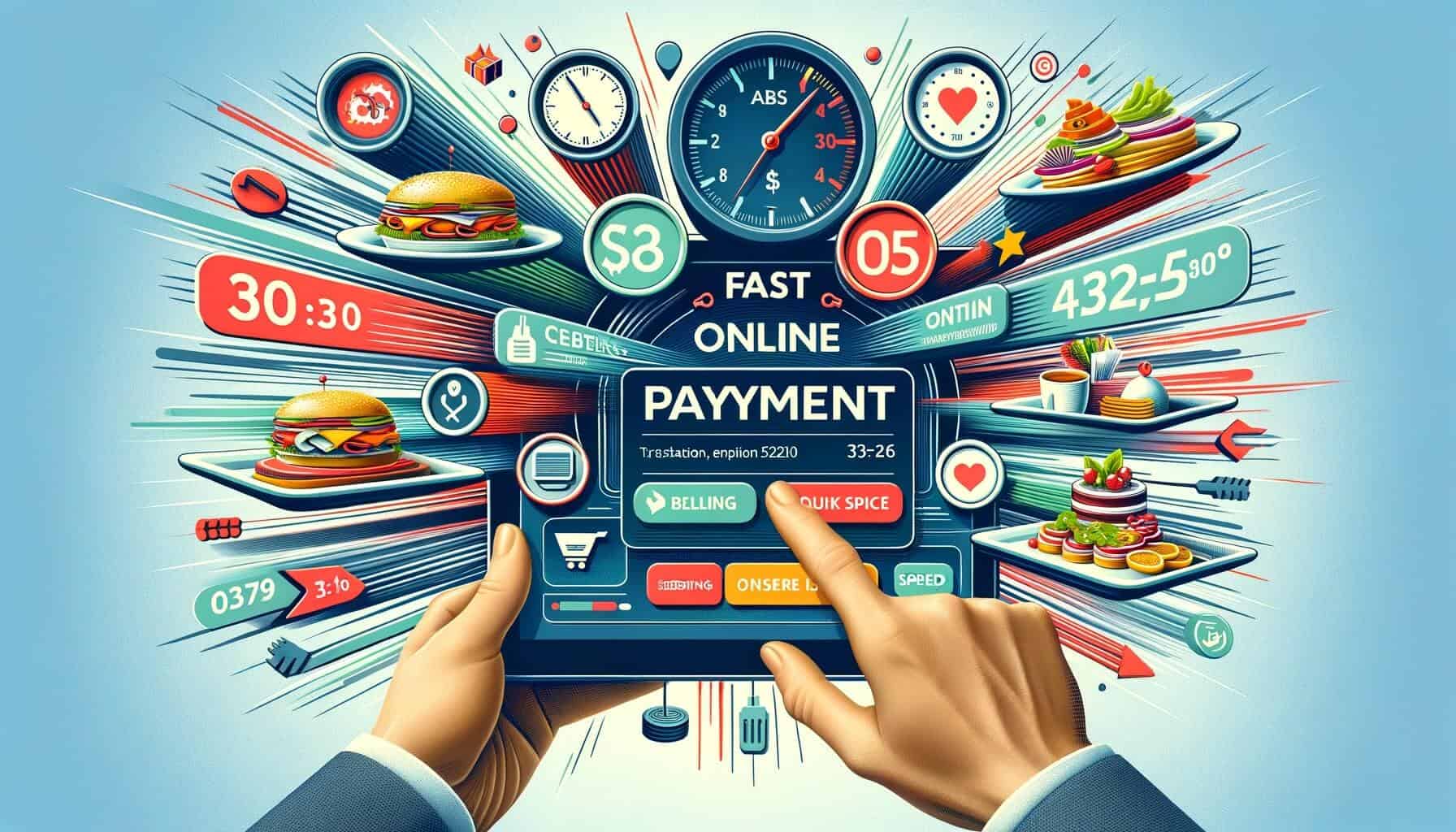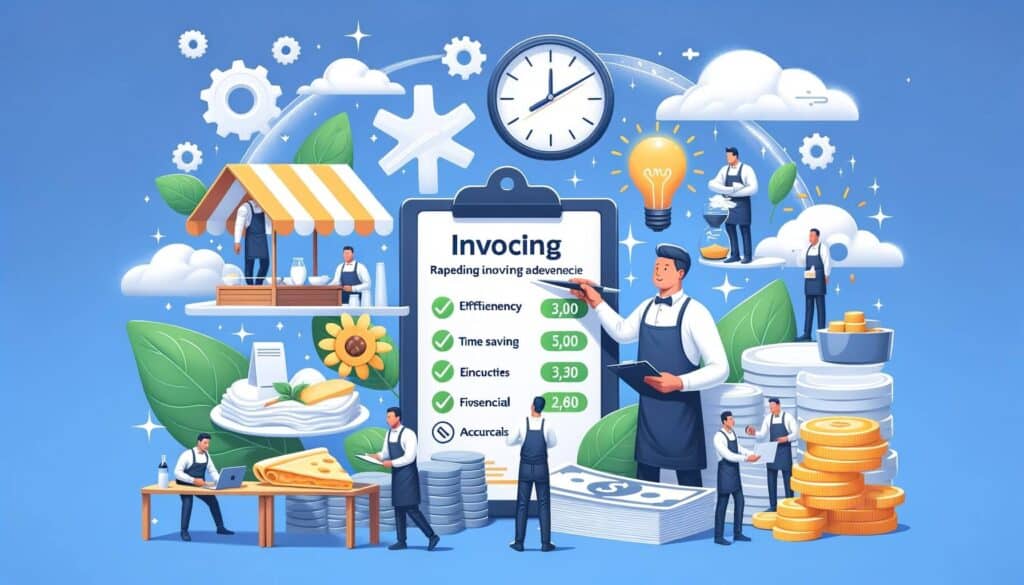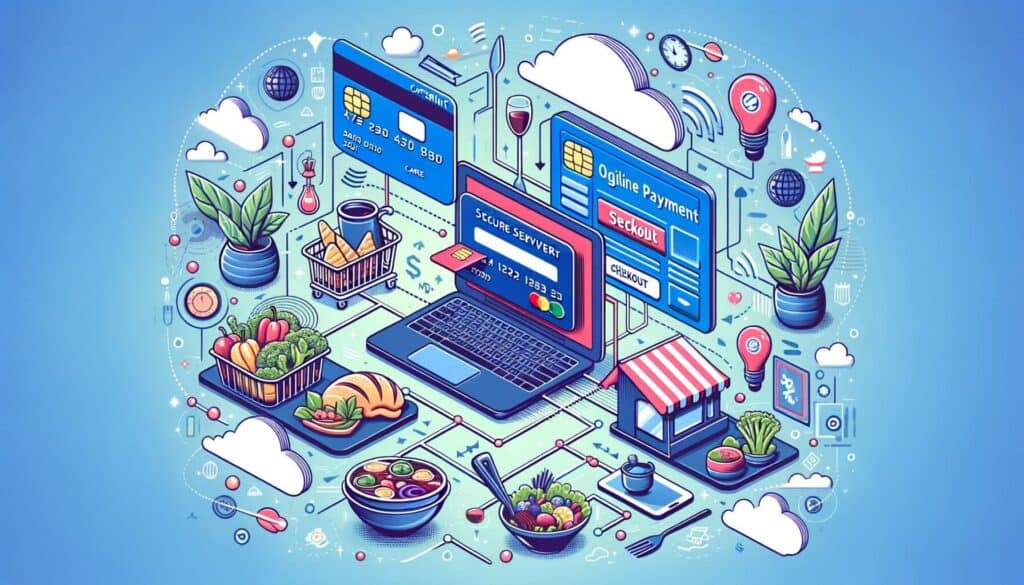
By Jermaine Thomas March 18, 2025
In today’s fast-paced digital world, online payment solutions have become an essential tool for businesses across various industries. Caterers, in particular, can greatly benefit from implementing online payment systems to streamline their billing processes and enhance customer experience.
This article will delve into the importance of online payment solutions for caterers, the benefits of fast billing, choosing the right payment solution, setting up the system, integrating it with your website, ensuring security and fraud prevention, automating invoicing and payment reminders, offering multiple payment options, and managing refunds and disputes.
Understanding the Benefits of Fast Billing for Caterers

Fast billing is crucial for caterers as it allows them to efficiently manage their finances and cash flow. With traditional billing methods, such as paper invoices and checks, the process can be time-consuming and prone to errors.
Online payment solutions offer a faster and more accurate way to generate invoices and receive payments. By automating the billing process, caterers can save valuable time and resources, allowing them to focus on other aspects of their business.
One of the key benefits of fast billing is improved cash flow. With online payment solutions, caterers can receive payments instantly, eliminating the need to wait for checks to be processed and cleared. This ensures a steady stream of revenue, which is especially important for small catering businesses that rely on timely payments to cover expenses and invest in growth opportunities.
Another advantage of fast billing is increased efficiency. Online payment systems allow caterers to generate invoices with just a few clicks, eliminating the need for manual data entry and reducing the risk of errors.
Additionally, these systems can automatically calculate taxes and apply discounts, saving time and ensuring accuracy. This efficiency not only benefits the caterer but also enhances the customer experience by providing a seamless and hassle-free payment process.
Choosing the Right Online Payment Solution for Your Catering Business

When selecting an online payment solution for your catering business, it is important to consider your specific needs and requirements. There are several factors to consider, including transaction fees, security features, integration options, and customer support.
Transaction fees are a crucial consideration as they can significantly impact your bottom line. Different payment solutions have varying fee structures, including flat fees per transaction or a percentage of the transaction amount. It is important to compare these fees and choose a solution that aligns with your budget and expected transaction volume.
Security is another critical factor to consider when choosing an online payment solution. Caterers handle sensitive customer information, including credit card details, and it is essential to ensure that this data is protected. Look for payment solutions that comply with industry standards, such as Payment Card Industry Data Security Standard (PCI DSS) compliance, and offer additional security features like encryption and fraud detection.
Integration options are also important to consider, especially if you already have an existing website or catering management system. Look for payment solutions that offer seamless integration with your website or software, allowing for a smooth and cohesive user experience. This integration can also help streamline your operations by automatically syncing payment data with your accounting or customer management systems.
Lastly, consider the level of customer support provided by the payment solution provider. In case of any issues or questions, it is crucial to have access to reliable and responsive support. Look for providers that offer multiple support channels, such as phone, email, and live chat, and have a reputation for excellent customer service.
Setting Up Your Online Payment System: A Step-by-Step Guide

Setting up an online payment system for your catering business may seem daunting, but with the right guidance, it can be a straightforward process. Here is a step-by-step guide to help you get started:
1. Research and choose a payment solution provider: Start by researching different payment solution providers and comparing their features, fees, and customer reviews. Choose a provider that aligns with your needs and budget.
2. Sign up for an account: Once you have chosen a provider, sign up for an account on their website. This usually involves providing basic information about your business and agreeing to the terms and conditions.
3. Verify your identity: To ensure security and compliance, payment solution providers may require you to verify your identity. This typically involves providing identification documents, such as a driver’s license or passport, and proof of business ownership, such as a business license or tax ID.
4. Set up your payment preferences: After verifying your identity, you can set up your payment preferences. This includes selecting the types of payments you want to accept, such as credit cards, debit cards, or digital wallets, and configuring your pricing and tax settings.
5. Customize your payment page: Many payment solution providers allow you to customize your payment page to match your branding. Take advantage of this feature to create a cohesive and professional look for your customers.
6. Integrate with your website: If you have an existing website, integrate the payment solution with it to provide a seamless user experience. This typically involves adding a payment button or widget to your website and configuring the integration settings.
7. Test the system: Before going live, thoroughly test your online payment system to ensure that everything is functioning correctly. Make test transactions using different payment methods to ensure that payments are processed accurately and that the system is capturing all necessary data.
8. Go live and promote your online payment option: Once you are confident in the functionality of your online payment system, make it live on your website and start promoting it to your customers. Inform them about the convenience and benefits of online payments and encourage them to use this option for their catering orders.
Integrating Online Payment Solutions with Your Catering Website

Integrating your online payment solution with your catering website is crucial for providing a seamless and user-friendly experience for your customers. Here are some key considerations when integrating online payment solutions with your website:
1. Choose a compatible payment solution: Ensure that the payment solution you choose is compatible with your website platform. Most payment solutions offer plugins or extensions for popular website platforms like WordPress, Shopify, or Magento. If you have a custom-built website, check if the payment solution provides APIs or code snippets for integration.
2. Design a user-friendly payment interface: The payment interface should be intuitive and easy to use for your customers. Avoid cluttering the page with unnecessary information or distractions. Keep the design clean and simple, with clear instructions and prominent call-to-action buttons.
3. Optimize for mobile devices: With the increasing use of smartphones and tablets, it is essential to ensure that your payment interface is mobile-friendly. Test the payment process on different devices and screen sizes to ensure a smooth experience for mobile users.
4. Provide clear instructions and guidance: Make sure to provide clear instructions and guidance to your customers on how to make a payment. Include information on accepted payment methods, any additional fees or charges, and any specific instructions or requirements for the payment process.
5. Offer guest checkout options: Some customers may prefer not to create an account or provide personal information during the checkout process. Offering a guest checkout option can help reduce friction and increase conversion rates. However, also provide the option for customers to create an account for future convenience.
6. Test the integration thoroughly: Before making the integration live, thoroughly test the payment process on your website. Make test transactions using different payment methods to ensure that payments are processed correctly and that the system captures all necessary data. Test the integration on different browsers and devices to ensure compatibility.
Ensuring Security and Fraud Prevention in Online Payments
Security is a top concern when it comes to online payments, and caterers must take the necessary steps to protect their customers’ sensitive information. Here are some best practices for ensuring security and fraud prevention in online payments:
1. Choose a secure payment solution: Select a payment solution that prioritizes security and complies with industry standards, such as PCI DSS. Look for providers that offer additional security features like encryption, tokenization, and fraud detection.
2. Use SSL encryption: Secure Socket Layer (SSL) encryption is essential for protecting data transmitted between your website and the payment solution. Ensure that your website has an SSL certificate installed, indicated by the “https” in the URL and a padlock icon in the browser.
3. Implement strong password policies: Enforce strong password policies for your online payment system, including requirements for minimum password length, complexity, and regular password changes. Educate your staff on the importance of strong passwords and the risks of password reuse.
4. Educate your staff on security best practices: Train your staff on security best practices, such as recognizing phishing attempts, avoiding suspicious links or attachments, and securely handling customer data. Regularly update your staff on the latest security threats and provide ongoing training to ensure they stay vigilant.
5. Monitor transactions for suspicious activity: Regularly monitor your online payment transactions for any signs of suspicious activity, such as unusually large transactions, multiple failed attempts, or transactions from high-risk countries. Implement fraud detection tools or work with a payment solution provider that offers fraud prevention services.
6. Keep software and systems up to date: Regularly update your website platform, payment solution plugins, and any other software or systems involved in the payment process. Updates often include security patches and bug fixes that help protect against vulnerabilities.
Streamlining the Billing Process: Automating Invoicing and Payment Reminders
Automating the billing process is a game-changer for caterers, allowing them to save time, reduce errors, and improve cash flow. Here are some ways to streamline the billing process through automation:
1. Generate invoices automatically: With online payment solutions, you can generate invoices automatically based on the orders received. This eliminates the need for manual data entry and ensures accuracy. Set up templates for different types of invoices, including recurring invoices for regular customers.
2. Schedule recurring invoices: For customers with recurring orders, set up recurring invoices to be automatically generated and sent at specified intervals. This saves time and ensures that invoices are sent promptly, reducing the risk of late payments.
3. Send payment reminders: Automate payment reminders to be sent to customers who have outstanding invoices. Set up reminders to be sent at specific intervals, such as one week before the due date and one day after the due date. This helps reduce the number of late payments and improves cash flow.
4. Integrate with accounting software: If you use accounting software like QuickBooks or Xero, look for payment solutions that offer integration with these platforms. This allows for seamless syncing of payment data, eliminating the need for manual data entry and reducing the risk of errors.
5. Provide online access to invoices and payment history: Offer your customers the convenience of accessing their invoices and payment history online. This reduces the need for manual inquiries and provides transparency and accountability.
6. Set up automatic payment processing: Some payment solutions offer the option to set up automatic payment processing for recurring invoices. This allows customers to authorize automatic deductions from their preferred payment method, ensuring timely payments and reducing the risk of late or missed payments.
Enhancing Customer Experience: Offering Multiple Payment Options
Offering multiple payment options is essential for catering businesses to cater to the diverse preferences of their customers. Here are some popular payment options to consider:
1. Credit and debit cards: Accepting credit and debit cards is a must for any catering business. This is the most common and convenient payment method for customers, allowing them to pay with their preferred card without the need for cash or checks.
2. Digital wallets: Digital wallets, such as Apple Pay, Google Pay, or PayPal, have gained popularity in recent years. These wallets allow customers to store their payment information securely and make payments with just a few taps on their smartphones or other devices.
3. Bank transfers: Some customers prefer to pay via bank transfers, especially for larger orders or recurring payments. Provide your bank account details and instructions for customers to make direct transfers.
4. Cash on delivery: Cash on delivery is a popular payment option for customers who prefer to pay in cash. This option is particularly useful for catering businesses that serve a local customer base.
5. Checks: While checks are becoming less common, some customers may still prefer to pay by check. If you choose to accept checks, clearly communicate your check acceptance policy and provide instructions for check payments.
6. Online payment platforms: In addition to credit and debit cards, consider offering online payment platforms specific to your region or target market. For example, in some countries, platforms like Alipay or WeChat Pay are widely used.
Managing Refunds and Disputes: Best Practices for Caterers
Refunds and disputes are an inevitable part of any business, including catering. Here are some best practices for managing refunds and disputes effectively:
1. Have a clear refund policy: Clearly communicate your refund policy to your customers to avoid misunderstandings and disputes. Include information on the circumstances under which refunds are offered, the process for requesting a refund, and any applicable fees or conditions.
2. Respond promptly to refund requests: When a customer requests a refund, respond promptly and acknowledge their request. Clearly communicate the steps involved in the refund process and provide an estimated timeline for resolution.
3. Investigate disputes thoroughly: In case of a dispute, thoroughly investigate the issue and gather all relevant information. This may involve reviewing order details, communication records, and any supporting evidence provided by the customer.
4. Communicate openly and professionally: Maintain open and professional communication with the customer throughout the refund or dispute resolution process. Keep the customer informed of the progress and any updates, and address their concerns or questions promptly.
5. Offer alternatives to refunds: In some cases, offering alternatives to refunds can help resolve disputes and maintain customer satisfaction. For example, offering a credit towards future orders or a discount on a future purchase can be a win-win solution for both parties.
6. Learn from feedback and improve: Use refund requests and disputes as an opportunity to learn and improve your processes. Analyze the root causes of refunds or disputes and identify areas for improvement in your operations, customer service, or product offerings.
Conclusion
Online payment solutions offer numerous benefits for caterers, including fast billing, improved cash flow, increased efficiency, and enhanced customer experience.
By choosing the right payment solution, setting up the system correctly, ensuring security and fraud prevention, automating invoicing and payment reminders, offering multiple payment options, and effectively managing refunds and disputes, caterers can streamline their operations and provide a seamless payment experience for their customers.
Embracing online payment solutions is not only a smart business move but also a necessity in today’s digital age.